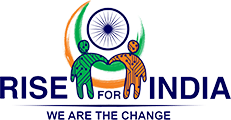I come from a place where many people happily prefer to visit a sorcerer or a god-man whenever they fall ill. You may argue that people are uneducated or ignorant, but partially it is not correct. The main reason behind it is the poor and yet expensive healthcare in India. People tend to avoid medical facilities until things get critical, just to save bucks ‘wasted’ on unreliable medical treatments. For a major chunk in India, it is almost impossible to afford advanced diagnoses. Rising living cost, unemployment, expensive education, increasing gap between rich and poor; is adding to it.
Prime Minister Modi hails about the growing India with a cut in government spending on healthcare from Rs 37,333 in 2014 to Rs 33,150 in 2015. While shifting the onus of healthcare spending from centre to state, India’s health spending in now lowest in the world, shrinking to 1.2% of the GDP. This is despite the fact that the public spend has increased, and implying that thus public spending has struggled to keep pace with the rise in healthcare demand. In a country where inadequate public health is already appalling and out-of-pocket spending even by the poor is one of the highest in the world, contributing hugely to poverty risks. Moreover, around 15 of the health ministry’s national programmes, including mental health, prevention of blindness, elderly care, and human resource development have not been allocated even a single rupee, and have been merged with NHM, which has also had its funding retrenched.
In India, Infrastructure gap remains substantial, and exacerbated by the underutilization of existing resources. As per WHO recommendation, there should be at least 3.5 beds for 1000 population, but number is far lower in Indian context i.e. 0.7 beds for 1000 population. Poor investments by government and unorganised private sector results into a huge deficit between the number of doctors required per population and the number of doctors are available (1 Doctor per 1700 population). India needs 3,40,000 doctors by the year 2015, at least.
In a country which has 21% world’s burden of diseases, MMR (Maternal Mortality Rate) of 178/1000, IMR (Infant Mortality Rate) of 40/1000; the government is just not doing adequate. Merely bragging about growth is not a key to bring the actual change in the livelihood of majority on Indians who are living below the poverty line. Though the efforts to address the concerns like open defecation, promoting Yoga and traditional Ayurveda medicines are appreciable steps taken by Prime Minister Modi.
Note: Image used in this post is only for representational purpose.

